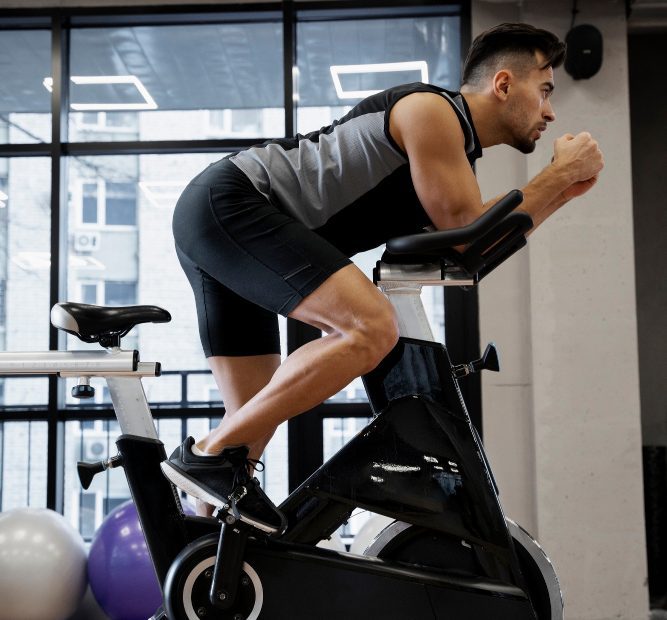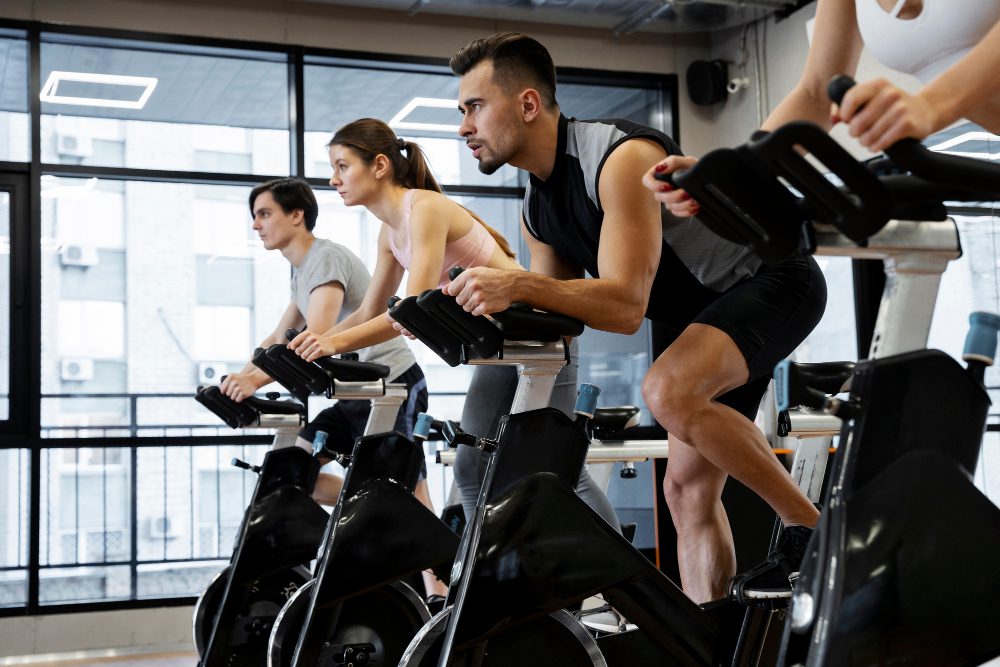Is spinning bike better than walking?
Introduction
In the pursuit of maintaining a healthy lifestyle, it is essential to find an exercise routine that suits our individual needs and preferences. Two popular forms of exercise, spinning and walking, often emerge as contenders for cardiovascular fitness. While spinning bikes can provide an intense workout in a controlled setting, walking offers a more versatile and accessible option for people of all fitness levels. In this article, we will explore the benefits and drawbacks of spinning bikes and walking, aiming to answer the question: Is spinning bike better than walking?
Spinning Bike: Intense Cardiovascular Workout
Spinning is an indoor cycling activity that involves riding a stationary bike with adjustable resistance levels. With energetic music and guided routines, spinning classes offer an immersive and motivating environment. The high-intensity nature of spinning allows for an efficient calorie burn and cardiovascular exercise. Moreover, it engages various muscle groups, including the calves, hamstrings, glutes, and core, leading to improved strength and endurance.
Benefits of Spinning:
- Burns calories at a high rate, aiding in weight loss.
- Improves cardiovascular health and endurance.
- Builds lower body strength and overall muscle tone.
- Provides a structured and engaging workout experience.
- Can be adjusted to accommodate different fitness levels.
“Spinning allows for an intense full-body workout, making it an excellent choice for those seeking a challenging cardiovascular exercise.”
However, there are certain limitations to consider when exclusively relying on a spinning bike for exercise. Spinning may place more strain on the joints, particularly the knees, which can be problematic for individuals with pre-existing joint issues or injuries. Additionally, the repetitive nature of spinning could lead to muscle imbalances if not supplemented with other forms of exercise that target different muscle groups.
Walking: Versatile and Accessible Exercise
Walking is a low-impact activity that requires no special equipment or memberships, making it easily accessible to individuals of all ages and fitness levels. It can be done outdoors, in nature, or simply as part of one’s daily routine. Walking offers numerous health benefits and can serve as an effective form of cardiovascular exercise, especially when performed at a brisk pace.
Benefits of Walking:
- Supports weight loss and weight maintenance.
- Boosts mood and mental well-being.
- Improves cardiovascular health and reduces the risk of chronic diseases.
- Strengthens bones and muscles, particularly in the lower body.
- Enhances overall mobility and flexibility.
“Walking provides a versatile and accessible exercise option that can fit into anyone’s lifestyle, regardless of their fitness level.”
Although walking may not provide the same level of intensity as spinning, it offers a sustainable and enjoyable way to incorporate physical activity into daily life. Additionally, it poses minimal risk of injury and can be easily modified to suit individual preferences and fitness goals.
Which is better: Treadmill or Spin Bike?
When it comes to choosing between a treadmill and a spin bike, there isn’t a one-size-fits-all answer. It depends on your personal fitness goals, preferences, and any specific needs you may have. Let’s compare these two popular exercise machines to help you make an informed decision.
1. Impact on Joints
If you have joint issues or are recovering from an injury, a spin bike might be a better option for you. Unlike running on a treadmill, cycling on a spin bike is low-impact, which helps reduce stress on your joints.
2. Cardiovascular Benefits
Both treadmills and spin bikes provide excellent cardiovascular workouts. However, due to the intense nature of spinning classes, many people find that using a spin bike can lead to higher heart rates and increased calorie burn in a shorter amount of time.
3. Muscular Engagement
While both machines engage multiple muscles groups, a spin bike primarily targets the lower body, including the quadriceps, hamstrings, glutes, and calves. On the other hand, a treadmill engages your entire lower body and also works your core muscles to maintain balance while running.
4. Convenience and Space
If you have limited space in your home, a spin bike may be more convenient as it typically takes up less room than a treadmill. Additionally, a spin bike doesn’t require any electrical outlets, making it easier to place anywhere in your home.
5. Variety and Entertainment
Treadmills often come equipped with various built-in workout programs, incline settings, and entertainment options such as TV screens or compatibility with apps. This can help make your workouts more engaging and enjoyable. Spin bikes, while lacking these features, offer the intensity and motivation of group cycling classes.
6. Cost
In terms of cost, spin bikes tend to be more affordable compared to high-quality treadmills. There are budget-friendly options available for both machines, but if you’re on a tight budget, a spin bike might be a more wallet-friendly choice.
Conclusion:
Ultimately, the decision between a treadmill and a spin bike boils down to personal preferences, fitness goals, and any specific requirements you may have. If joint-impact is a concern or you enjoy intense cardio workouts, a spin bike may be the better option for you. On the other hand, if you prefer a full-body workout or want access to various workout programs and entertainment options, a treadmill might be a better fit. Remember to choose the exercise machine that best suits your needs and motivates you to stick to your fitness routine!
Is Pilates Better Than Spinning?
Both Pilates and spinning are popular forms of exercise that offer unique benefits. While spinning is an intense cardiovascular workout that primarily targets the lower body, Pilates focuses on strengthening the core muscles and improving flexibility and posture.
Pilates Benefits
Pilates is a low-impact exercise method that emphasizes controlled movements and proper alignment. It helps to:
- Improve core strength and stability
- Enhance muscular endurance
- Increase flexibility and range of motion
- Correct postural imbalances
According to research, regular Pilates practice can also lead to better balance and coordination, reduced back pain, and improved overall body awareness.
Spinning Benefits
Spinning, on the other hand, is a high-intensity cardiovascular workout that offers the following benefits:
- Effective calorie burning and weight loss
- Improved cardiovascular endurance
- Strengthening of leg muscles
- Increased lung capacity
Choosing the Right Exercise for You
The choice between Pilates and spinning ultimately depends on your fitness goals and preferences. If you are looking to improve core strength, flexibility, and overall body conditioning, Pilates may be the better option for you. On the other hand, if you enjoy intense cardio workouts and want to burn calories and enhance cardiovascular endurance, spinning may be more suitable.
Remember, it’s essential to listen to your body and choose an exercise that you enjoy and can stick to in the long run.
Ultimately, a balanced fitness routine that incorporates a variety of exercises is often the most beneficial. Consider combining Pilates and spinning or alternating between them to enjoy the unique advantages of both.
Comparing Pilates and Spinning
| Pilates | Spinning | |
|---|---|---|
| Primary Focus | Core strength and flexibility | Cardiovascular endurance and leg strength |
| Intensity | Low to moderate | High |
| Calorie Burn | Moderate | High |
| Impact on Joints | Low | Low |
In conclusion, Pilates and spinning are both effective forms of exercise with distinct benefits. Ultimately, the choice between them depends on your personal fitness goals and preferences. Incorporating a mix of both exercises into your routine can help you achieve a well-rounded fitness regimen.
Is spinning better than rowing?
Introduction
When it comes to cardiovascular exercises, both spinning and rowing are popular choices for individuals looking to improve their fitness levels. Each exercise offers unique benefits and caters to different preferences. In this article, we will explore whether spinning is better than rowing and help you determine which exercise might be more suitable for you.
Benefits of Spinning
Spinning, also known as indoor cycling, has gained popularity due to its high-intensity workout and numerous benefits. It provides a low-impact workout that puts minimal stress on the joints, making it suitable for individuals with joint issues. Spinning classes offer a motivating group environment and allow for varied resistance levels, enabling participants to tailor the intensity of their workouts. Regular spinning can improve cardiovascular endurance, burn calories, and enhance lower body strength.
Benefits of Rowing
On the other hand, rowing is a full-body workout that engages various muscle groups simultaneously. It offers a combination of cardiovascular exercise and strength training, making it an efficient option for those looking to build muscle and burn calories. Rowing helps improve posture, enhances upper body strength, and can be an excellent choice for individuals seeking a well-rounded workout.
Comparison of Spinning and Rowing
Both spinning and rowing have their advantages and are effective forms of exercise. The choice between the two depends on individual goals, preferences, and any existing physical limitations. Here is a comparison:
| Spinning | Rowing | |
|---|---|---|
| Cardiovascular Workout | ✓ | ✓ |
| Low-Impact | ✓ | |
| Upper Body Strength | ✓ | |
| Lower Body Strength | ✓ | ✓ |
Conclusion
Ultimately, whether spinning or rowing is better for you depends on your specific goals and preferences. Spinning may be preferable for those with joint issues or who enjoy high-energy group workouts, while rowing offers a full-body workout and helps build upper body strength. Consider trying both exercises to see which one you enjoy more and aligns with your fitness goals.
Remember, the key to any successful exercise routine is consistency and finding an activity that you enjoy!
Now that you have a better understanding of the benefits of spinning and rowing, you can make an informed decision and incorporate the exercise that suits you best into your fitness regimen.



